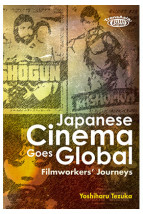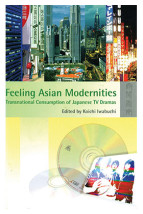Making Icons
Repetition and the Female Image in Japanese Cinema, 1945–1964
(塑造女神:日本戰後電影的女性形象與映像的重複)
ISBN : 978-988-8208-99-9
October 2016
244 pages, 6″ x 9″, 25 b&w illus.
- HK$480.00
Ebooks
Also Available on
One distinctive feature of post-war Japanese cinema is the frequent recurrence of imagistic and narrative tropes and formulaic characterizations in female representations. These repetitions are important, Jennifer Coates asserts, because sentiments and behaviours forbidden during the war and post-war social and political changes were often articulated by or through the female image. Moving across major character types, from mothers to daughters, and schoolteachers to streetwalkers, Making Icons studies the role of the media in shaping the attitudes of the general public. Japanese cinema after the defeat is shown to be an important ground where social experiences were explored, reworked, and eventually accepted or rejected by the audience emotionally invested in these repetitive materials.
An examination of 600 films produced and distributed between 1945 and 1964, as well as numerous Japanese-language sources, forms the basis of this rigorous study. Making Icons draws on an art-historical iconographic analysis to explain how viewers derive meanings from images during this peak period of film production and attendance in Japan.
‘It is very difficult not to heap superlatives upon Making Icons. This splendid work sheds a shining light on the situation of women in post-war Japan, and on post-war Japan itself. Not only is this a deft reading of text and context, it expands the very notion of context, seeing stardom through the lens of filmic and extra-filmic texts. A must-read for anyone interested in Japanese cinema.’ —David Desser, Professor Emeritus, University of Illinois at Urbana-Champaign
‘This is a compelling book. I am excited by Jennifer Coates’s art-historically informed iconographic approach towards female representation in post-war Japanese cinema. Making Icons will certainly make a splash in the field of Japanese film studies.’ —Daisuke Miyao, Professor and the Hajime Mori Chair in Japanese Language and Literature, University of California, San Diego







